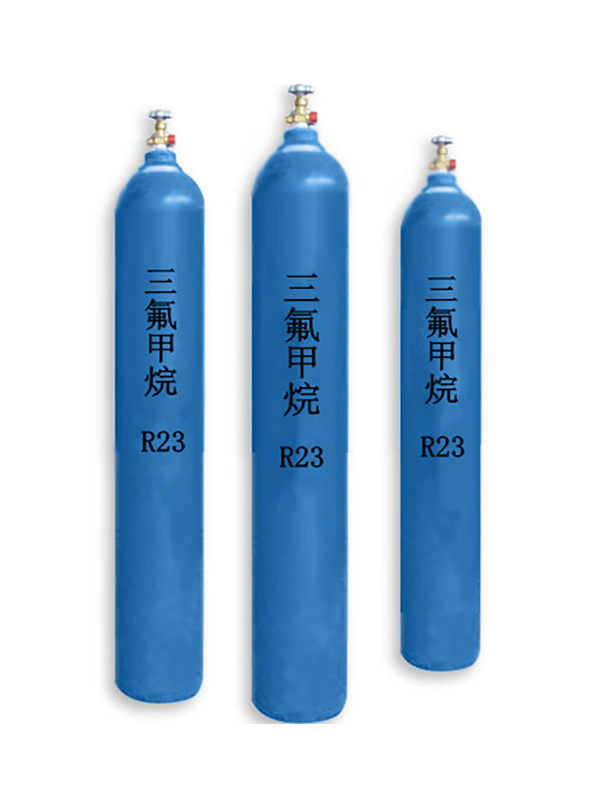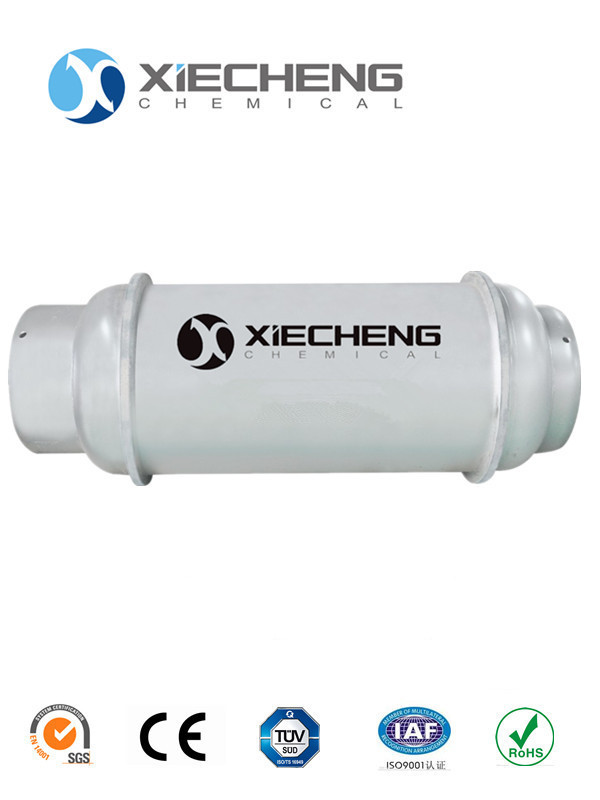
Packaging Specifications: 200L iron drum 300kg/drum
Tetrachloroethylene, an organic compound, also known as perchloroethylene, is a compound formed by replacing all hydrogen atoms in ethylene with chlorine.
Tetrachloroethylene is an important organochlorine product. In industry, it is mainly used as an organic solvent, dry cleaning agent, desulfurizing agent, textile finishing agent, metal cleaning agent, fat extraction agent, organic synthesis and heat transfer medium, and in medicine as an anthelmintic and an intermediate for refrigerant CFC-123, etc.
Physical Properties
| Tetrachloroethylene Other Names | Perchloroethylene |
| Appearance | Colorless liquid with a chloroform-like odor. |
| Molecular Formula | C2Cl4 |
| Molecular Weight | 165.82 |
| Melting Point(℃) | -22.2 (Reported -22.35; -22.7) |
| Boiling Point(℃) | 121.2 |
| Relative Density (Water=1) | (20℃/4℃)1.6226 |
| Relative Vapor Density (Air=1) | 5.83 |
| Saturated Vapor Pressure (kPa) | 2.11(20℃) |
| Heat of Combustion (kJ/mol) | 679.3 |
| Critical Temperature(℃) | 347.1 |
| Critical Pressure(MPa) | 9.74 |
| Refractive Index | 1.50566 |
| Logarithm of n-octanol/water partition coefficient | 2.88 |
| Solubility | Insoluble in water, miscible with most organic solvents such as ethanol and ether. |
Appearance and Properties: Colorless liquid with a chloroform-like odor.
Logarithm of n-octanol/water partition coefficient: 2.88
Solubility: Insoluble in water, miscible with ethanol, ether and most organic solvents.
It is a colorless and transparent liquid with an ether-like odor. It can dissolve many substances (such as rubber, resin, fat, aluminum trichloride, sulfur, iodine, mercuric chloride). It is miscible with ethanol, ether, chloroform, and benzene. Soluble in about 10000 times its volume of water.
Application Fields
1. Tetrachloroethylene has a wide range of uses, mainly as a metal degreasing solvent, and also as an anthelmintic. Tetrachloroethylene can be used as a fat extraction agent, fire extinguishing agent, and smoke screen agent, and can also be used to synthesize trichloroethylene and fluorinated organic compounds.
2. Widely used as a dry cleaning agent for natural and synthetic fibers. It is also used as a metal degreasing and washing agent, general solvent, and organic synthesis intermediate.
3. Used as a chromatographic analysis standard substance.
4. Used as an insecticide for adhesives, fat extraction agent, and also used in organic synthesis.
Precautions
Health Hazards
This product has irritating and anesthetic effects. Acute poisoning by inhalation causes upper respiratory tract irritation, lacrimation, and salivation. This is followed by dizziness, headache, nausea, ataxia, and intoxication-like symptoms. Oral ingestion causes dizziness, headache, drowsiness, nausea, vomiting, abdominal pain, blurred vision, numbness in the limbs, and even excitement, convulsions, and coma, which can be fatal. Chronic effects: fatigue, dizziness, nausea, and intoxication. Liver damage may occur. Repeated skin contact can cause dermatitis and eczema.
Fire and Explosion Hazards
This product is combustible, toxic, and irritating. It generally does not burn, but it can still burn if exposed to open flames and high temperatures for a long time. Decomposition under high heat produces toxic and corrosive gases. It can react with active metal powders (such as magnesium, aluminum, etc.), causing decomposition. If exposed to high heat, it can decompose violently, causing container rupture or explosion accidents.
Environmental Hazards
Most tetrachloroethylene released into the ambient atmosphere decomposes due to sunlight, forming products such as hydrogen chloride, trichloroacetic acid, and carbon dioxide. Tetrachloroethylene in surface water evaporates rapidly and hardly degrades in water. This compound is stable in groundwater, which is the reason for the increasing incidence of groundwater contamination due to industrial spills and waste accumulation.
Emergency Measures
Skin Contact: Remove contaminated clothing and wash the skin thoroughly with soap and water.
Eye Contact: Lift the eyelids and rinse with running water or saline. Seek medical attention.
Inhalation: Quickly leave the scene to a fresh air area. Keep the respiratory tract unobstructed. If breathing is difficult, give oxygen. If breathing stops, immediately perform artificial respiration. Seek medical attention.
Ingestion: Drink plenty of warm water and induce vomiting. Seek medical attention.
Fire Fighting Measures
Harmful combustion products: Hydrogen chloride, phosgene.
Extinguishing methods: Firefighters must wear oxygen respirators. Spray water to keep the containers in the fire field cool until the fire is extinguished.
Extinguishing agents: Fogged water, foam, dry powder, carbon dioxide, sand.
Leakage Handling
Emergency Response: Quickly evacuate personnel from the contaminated area to a safe area and isolate it, strictly limiting entry and exit. Emergency responders are advised to wear self-contained positive-pressure respirators and protective suits. Enter the scene from the upwind side. Cut off the leak source as much as possible. Prevent it from flowing into restricted spaces such as sewers and drainage ditches.
Small Leaks: Absorb or adsorb with sand or other non-combustible materials. An emulsion made from a non-combustible dispersant can also be used for washing; dilute the wash solution and discharge it into the wastewater system.
Large Leaks: Construct a dike or pit for containment. Cover with foam to reduce vapor hazards. Transfer with pumps to tank trucks or special collection containers for recovery or transport to a waste disposal site for treatment.
Operational Procedures
Operate in a closed system with enhanced ventilation. Operators must be specially trained and strictly follow operating procedures. Operators are advised to wear a self-priming filter-type respirator (half mask), chemical safety goggles, permeable protective clothing, and chemical-resistant gloves. Keep away from sources of ignition and heat; smoking is strictly prohibited in the workplace. Use explosion-proof ventilation systems and equipment. Prevent vapor leaks into workplace air. Avoid contact with alkalis, active metal powders, and alkali metals. Handle with care during transportation to prevent damage to packaging and containers. Equip with appropriate types and quantities of fire-fighting equipment and leak emergency response equipment. Empty containers may contain harmful residues.
Storage Procedures
Store in a low-temperature, dry warehouse with good ventilation; store separately from oxidants and food additives; add a stabilizer such as hydroquinone during storage.
Store in a cool, well-ventilated warehouse. Keep away from fire and heat sources. Packaging must be sealed and kept from contact with air. Should be stored separately from alkalis, active metal powders, alkali metals, and edible chemicals; mixed storage is prohibited. Equip with appropriate types and quantities of fire-fighting equipment. The storage area should be equipped with leak emergency response equipment and suitable containment materials.
Preventive Measures
Engineering Controls: Closed operation, pay attention to ventilation. Mechanization and automation as much as possible. Provide safety showers and eye wash facilities.
Respiratory Protection: When dispersed in the air, it is recommended to wear a self-priming filter-type respirator (half mask) and chemical safety goggles.
Body Protection: Wear breathable protective clothing.
Hand Protection: Wear chemical-resistant gloves.
Other Protections: Smoking, eating and drinking are strictly prohibited in the workplace. Store clothing contaminated with toxins separately and keep them for washing and reuse. Maintain good hygiene habits.
Keywords
Previous
Next

Tetrachloroethylene
Contact Information
Product Categories
Inquire Now
If you are interested in our products, please leave your email address, and we will contact you as soon as possible, thank you!









